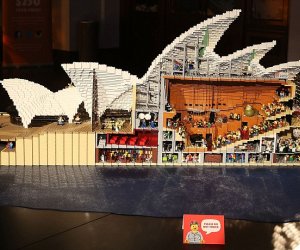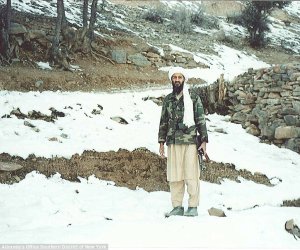Inside the toxic grave of the longest battle in history

The forest in northern France appears almost fairytale-like like in its eerie calm.
But the apparently lush ground hides a deadly secret: underneath this green carpet lies lethal levels of arsenic, unexploded bombs, tracts of barbed wire and the remains of the men who gave their lives fighting for control of this strip of land almost 100 years ago.
The forest is so dangerous that swathes of it have been declared a no-go zone, where trees no longer grow, and only the brave or foolish have dared tread in the 97 years since the end of the First World War.
For the forest, and countryside surrounding it, was the site for the Battle of Verdun, the longest in history, now categorised as a 'Zone Rouge' - still toxic after all this time.
Few could have imagined, when the Germans stormed the town of Verdun, near the border with Belgium, on February 21, 1916, what the repercussions would be down the generations.
On the first day alone, the Germans - who sent 140,000 soldiers to attack the French town at the start - had 1,000 guns pummeling the earth, and the French soldiers.
The aim, said Erich von Falkenhayn, the German chief of the general, was to 'bleed the French army white'.
One French officer recalled: 'When the first wave of the assault is decimated, the ground is dotted with heaps of corpses, but the second wave is already pressing on.
'Once more our shells carve awful gaps in their ranks... Then our heavy artillery bursts forth in fury. The whole valley is turned into a volcano, and its exit blocked by the barrier of the slain.'
Another remembered how the 'men were squashed. Cut in two or divided from top to bottom. Blown into showers; bellies turned inside out; skulls forced into the chest as if by a blow from a club'.
This would continue for another 300 days: when it ended, the French victorious, they had moved only a few hundred yards from where they began, having obliterated a piece of earth larger than the city of Paris.
More than 300,000 families lost their sons in this battle of attrition have to come to terms with their loss, and nine villages had been blasted into oblivion, 'submerged in soldier's blood, crammed with dead bodies gnawed by rats', according to contemporary Abbot Thellier de Poncheville.
What they could not have known then, as they counted the cost, was the damage they had done to the land.
The remains of the young men who fought valiantly for their countries were hidden in what once had been a peaceful idyll.
Then there were the chemical-packed weapons which exploded across the once green fields, lying on the ground. It is thought as many as 65 million shells may have been fired over the course of the battle, many of these filled with poisons.
The French immediately took the danger seriously: a year after the war's end, it bought 10,000 hectares of battleground, consigning the villages to history and allowing nature to take back the blighted land.
Officially, it was a Zone Rouge - an area in a crescent shape around Verdun, considered too dangerous to allow people to return in the immediate aftermath of the war.
Those who did venture onto the battlefield risked stepping on a shell meant to explode generations before. According toLe Monde, some 15 per cent of the shells shot during World War One failed to explode.
And they are still deadly - the sound of the poison liquids inside can still be heard.
The most recent fatalities came in 2007, when a live mine blew up as two workers tried to carry it to the munitions plant, where it would have been defused.
But attempts to clear the area of its dangerous bounty seemed doomed to failure.
Clearing the land of the detritus of the war in the worst affected areas is a 'near impossibility', Henri Belot, who was responsible for 'de-mining' the area, said a number of years ago.
Indeed, the entire forest would have to be destroyed, and at least a metre of soil dug away to find unaffected ground.
(dailymail.co.uk)








www.ann.az
Similar news
Similar news
Latest news 
More news 



































 Photo
Photo 



 Video
Video 

